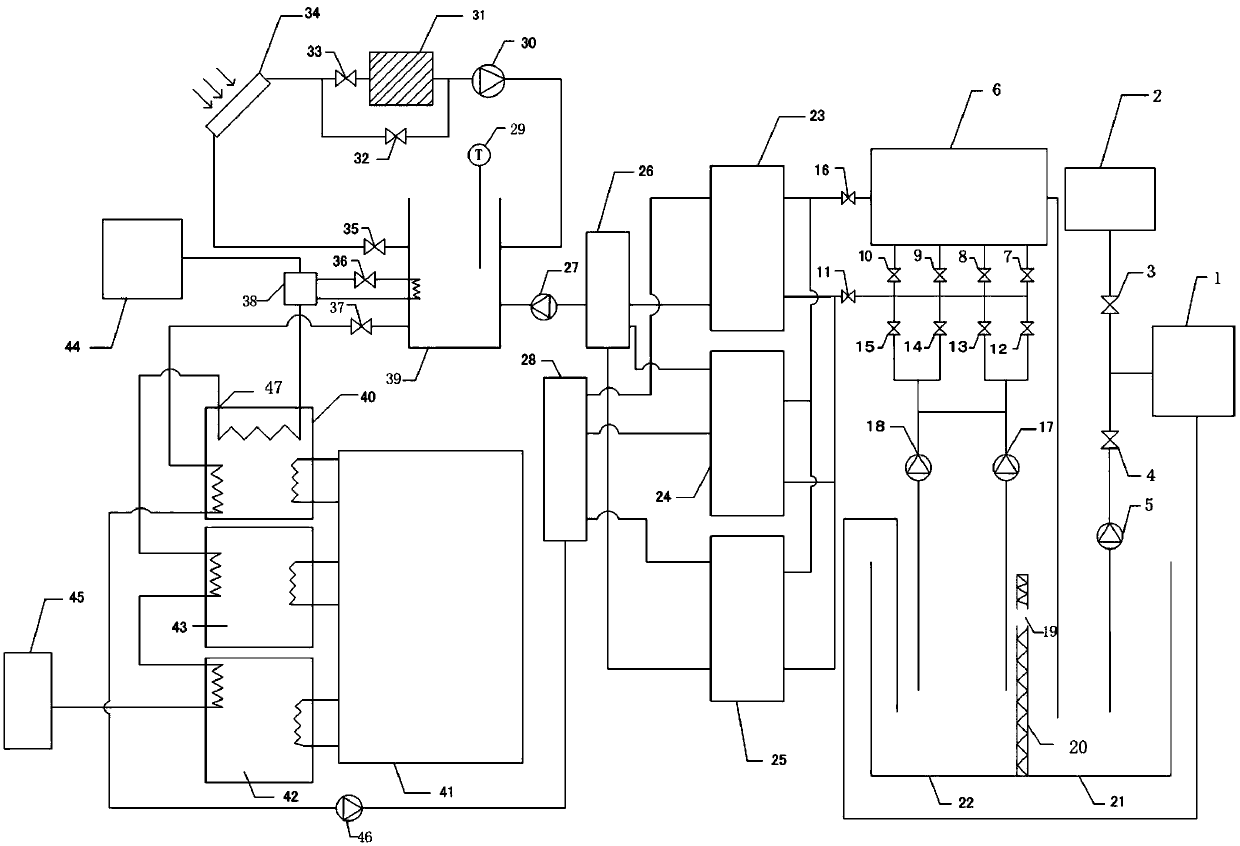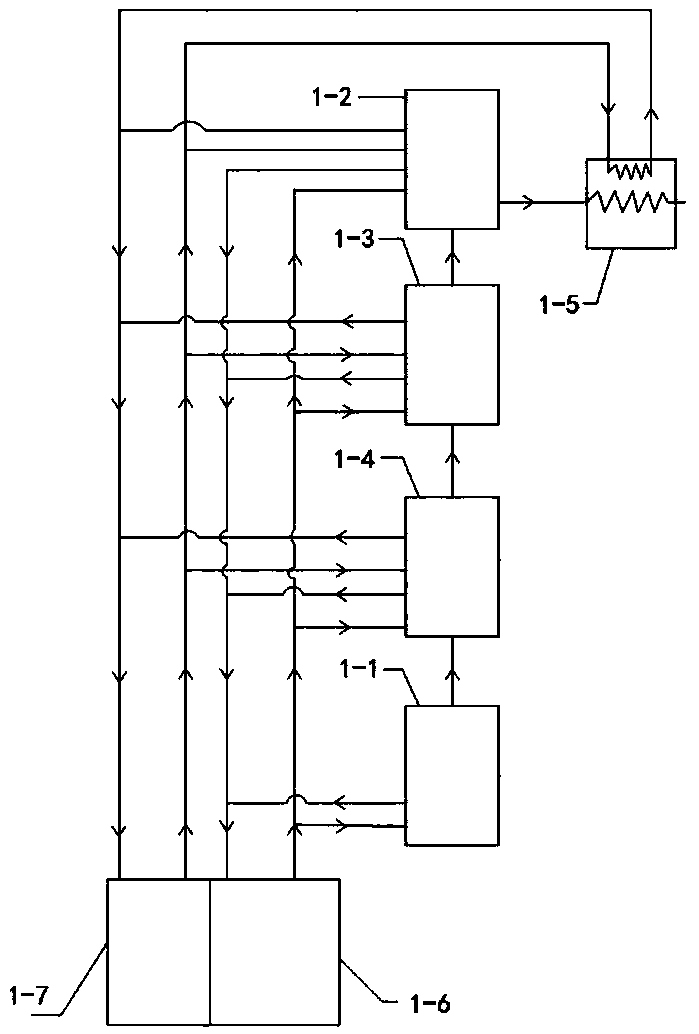Heating method for mixing-heat-supplement-type lithium bromide heat pump
A lithium bromide and heat pump technology, applied in heat pumps, heating methods, household heating, etc., can solve problems such as discarding, and achieve the effect of saving and fully utilizing water sources and heat
- Summary
- Abstract
- Description
- Claims
- Application Information
AI Technical Summary
Problems solved by technology
Method used
Image
Examples
Embodiment 1
[0019] Embodiment 1: A heating system integrating multiple waste heat couplings, including a float glass waste heat recovery device, a solar waste heat recovery device and a lithium bromide heat pump heating device.
[0020] The float glass waste heat recovery device includes a float glass workshop (1), a hot pool (22), a cold pool (21), a second circulation pump (17), a third circulation pump (18) and two-stage control valves, The cooling tower (6), the heat pump, the first water outlet of the float glass workshop (1) is led into the heat pool (22) by the first water pipe, the inlet of the cooling tower (6) is connected to the upper water pipe, and the outlet of the cooling tower (6) The pipeline leads to the cold pool (21), the upper water pipe is equipped with a two-stage control valve and a circulating pump, the upper water pipe leads to the hot pool (22), and the circulating pump is arranged between the hot pool (22) of the upper water pipe and the two-stage control valve ...
PUM
 Login to View More
Login to View More Abstract
Description
Claims
Application Information
 Login to View More
Login to View More - R&D
- Intellectual Property
- Life Sciences
- Materials
- Tech Scout
- Unparalleled Data Quality
- Higher Quality Content
- 60% Fewer Hallucinations
Browse by: Latest US Patents, China's latest patents, Technical Efficacy Thesaurus, Application Domain, Technology Topic, Popular Technical Reports.
© 2025 PatSnap. All rights reserved.Legal|Privacy policy|Modern Slavery Act Transparency Statement|Sitemap|About US| Contact US: help@patsnap.com


